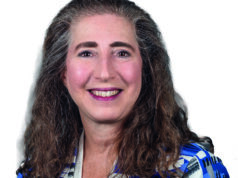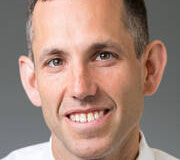
Seeking a better understanding of why women with ruptured abdominal aortic aneurysms (AAAs) have worse outcomes when compared with men, a new study champions adherence to “evidence-based practice” to challenge gender disparities within vascular surgery, in pursuit of sustained conversation about these differences within policy and research spaces.
Presented at the 2023 Women’s Vascular Summit in Buffalo, New York (April 28–29), lead author Blake Murphy, MD, an integrated vascular surgery resident from the University of Washington in Seattle, spoke to Vascular Specialist in the hopes that their research will prompt better awareness of health disparities within institutional practices over time.
“In the past five years, we have seen more frequent conversations about where our blind spots are—not only on a societal level but also within medicine—in how we treat and interact with patients who look different to us, or who come from different backgrounds,” Murphy said. “So I hope [our research] adds to the growing body of literature that promotes guideline-based practice for people of different races, ethnicities and genders and orientations.”
Clarifying the route they took to researching this area, Murphy began by referencing an earlier iteration of their current study in which they reviewed a AAA rupture database built between 2002–2018.
They found discrepancies between the amount of endovascular aortic repairs (EVARs) performed between men and women, with around 40% of women receiving EVARs after initial AAA presentation, compared with 55% received in men. Finding no significant difference in post-operative outcomes, Murphy noted that sex-related disparities in AAA diameter normalized when aortic size index was calculated.
Informing their next line of research, Murphy and her team sought to explore physical anatomical differences and the higher rates of rupture despite smaller AAA diameters. Using data from the University of Washington’s Harborview Medical Center—which is one of five level 1 trauma centers in the WWAMI region that includes Washington, Wyoming, Alaska, Montana and Idaho—Murphy emphasized the breadth of acute presentations they were able to access, as the institution covers such an expansive region.
Using the Society for Vascular Surgery (SVS) guidelines—published in 2009, which recommended an EVAR-first approach to treating ruptured AAAs—Murphy and her team found that the variations in how men and women were offered endovascular interventions were normalized.
Interrogating their results and any limitations, Murphy underlined the importance of acknowledging the “technological changes” that occurred between 2002–2018, such as the adoption of electronic medical records (EMRs). She explained the difficulties this technological hurdle posed when retrieving anatomical data which, if successfully accessed, may have better informed their current conclusions given that “one of the common arguments is that women are not offered endovascular intervention in these settings because of anatomic limitations.”
Murphy and her team have not been deterred by these blind spots, but instead use them to fuel further investigation. “This is a jumping off point for iterations about how to inform practice and specific examination of anatomical characteristics,” Murphy stated. “This research provides a pointed opportunity for not just our own practice, but vascular surgical practice in general,” she added, emphasizing the “incredible importance of industry collaboration” in the rapidly advancing space.
Reflecting on the importance of the Women’s Vascular Summit as an invaluable opportunity to “come together” as women in vascular surgery to discuss research, Murphy thanked her mentor Sara Zettervall, MD, associate program director at the University of Washington Montlake Campus, who is currently co-investigating for two investigational device exemptions (IDEs) within the complex aortic space at Harborview and the University of Washington Medical Center. “She is one of the people who are building an incredible research pipeline at the university, with tremendous support from our faculty in general,” said Murphy. “We certainly have plans to iterate on our current research, so you’ll certainly be seeing more from us.”
Wrapping up her presentation, Murphy acknowledged the fast-paced evolution of vascular surgical practice throughout the 21st century, and how, in a specialty so swiftly advancing, it is within healthcare specialists’ “ability” to “tackle disparities that we see in medical practice” and to continue to engage in “robust discussion” and consistent reevaluation to eliminate them.












